An icon of Detroit’s ruin is now a symbol of Motor City’s economic resurgence
For more than 35 years, Michigan Central Station has lain dormant, towering above Detroit’s Corktown neighborhood as a harsh and stoic reminder of the city’s economic pain.
The 18-story monolith that at one point was the tallest railroad station in the world had fallen derelict, its once opulent halls tattooed with graffiti, stripped for parts, and left scorched and broken.
Ronald Butler, who had a 20-year career with the Detroit Fire Department, recalled responding to fires there after it closed in 1988.
“We’ve always been known as the busiest firefighting department in the country,” Butler said. “A lot of that was from buildings being burned by people who needed to get out of a property or burn a property for insurance.”
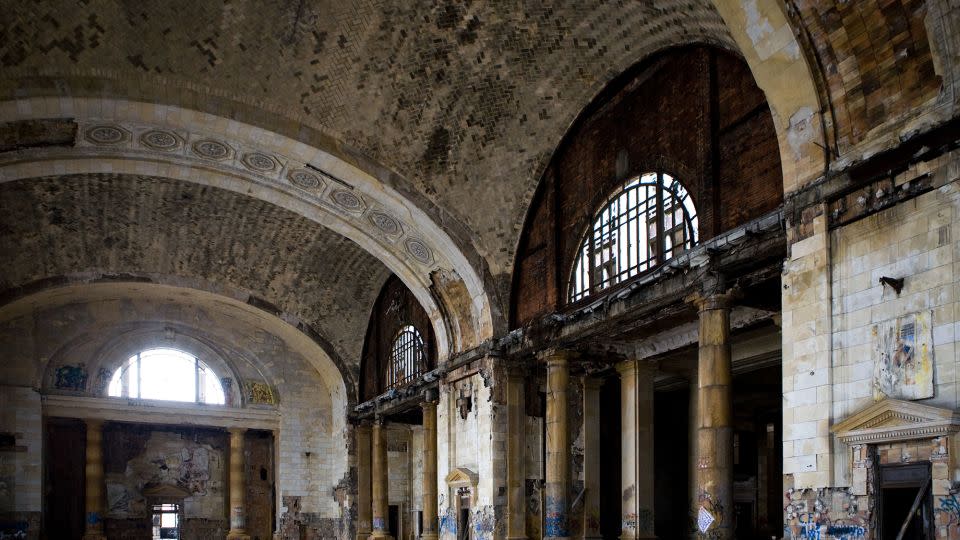
“There was a sense of hopelessness,” he added.
When Detroit became the largest municipality to go bankrupt in 2013, it had fallen hard from its glory days of the early to mid 20th century, when Henry Ford’s arrival and creation of the first-ever moving assembly line vaulted the city into a manufacturing hub and the automotive capital of the world.
Now, Michigan Central Station, the neighboring old Book Depository and Butler himself are all symbols of hope for Detroit’s future and its ongoing economic resurgence.
Last year, the rehabbed depository was opened to house a blossoming batch of mobility and energy startups, including one helmed by Butler, who started Energy Storage Safety Products International, which makes fire mitigation and prevention technologies for lithium ion batteries.
Michigan Central Station will reopen on Thursday, following a six-year renovation and nearly $1 billion of investment from the Ford Motor Company and its founding family. The historic building’s rebirth as a mixed-used property (with offices, a hotel and, eventually, restaurants and retail) anchoring an innovation-focused district will be celebrated with a blockbuster concert Thursday night.
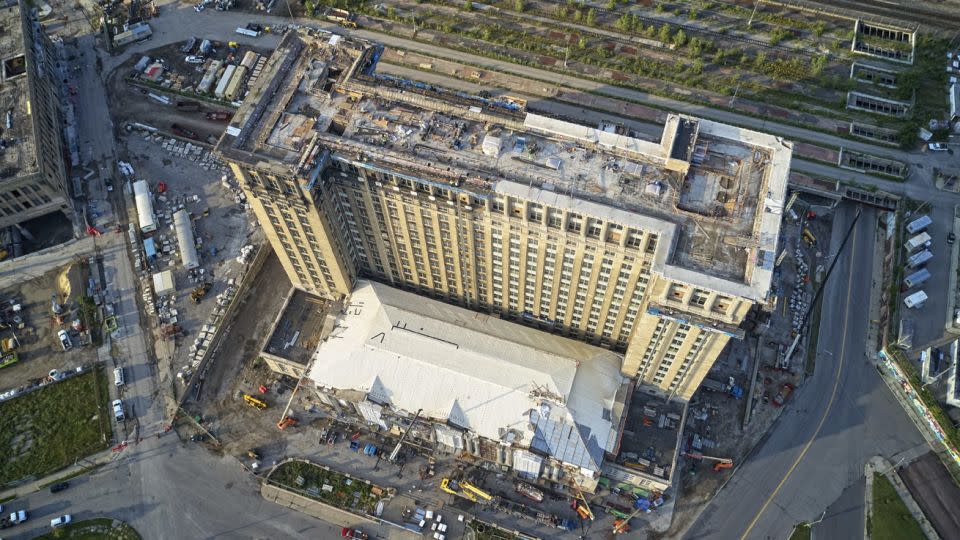
“Corktown is a very vibrant neighborhood, it’s the oldest neighborhood in Detroit, but there was 30 acres, including this incredible old train station that was literally sitting abandoned and looming over the city as a reminder of the rise and fall of Detroit,” said Mary Culler, a longtime Ford executive and director of the Michigan Central Station innovation district.
“It was a massive project and needed some incredible vision; but … when I think about what Ford has committed here, it really is incredible, because it is bringing back an asset to the city, along with the 30 acres around it, that is going to be incredibly vibrant,” she added.
‘You had to fix the place up’
The renewed Michigan Central comes at a critical time in Detroit’s economic recovery, which as been more than a decade in the making, said Kevin Johnson, president and chief executive officer at the Detroit Economic Growth Corporation.
The city has come a long way since July 18, 2013, when Detroit was the largest municipality in US history to file for bankruptcy after years of declining revenue, population losses, rising crime, a national financial crisis, automaker struggles and political corruption.
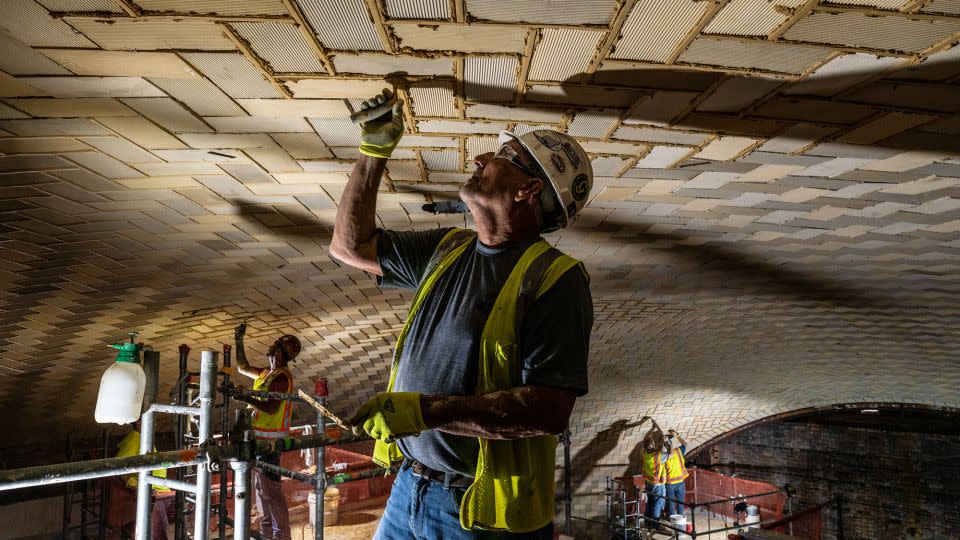
“Any city worth its own salt has a vibrant downtown that pumps the blood into the neighborhoods that it needs in order for the revitalization in the neighborhoods to start taking place,” Johnson said. “And that’s been a theme in Detroit since 2013. Right when the bankruptcy happened, philanthropic, corporate, neighborhood groups, outside investors began to look at Detroit as a [growth] opportunity, versus an opportunity to close it out and close it down.”
And it started with the basics: repairing sidewalks, turning back on streetlights, revitalizing the riverfront, coordinating trash pickup, demolishing homes that were left abandoned, razing industrial facilities that had fallen into ruin.
“The fundamentals of running a city was the core of what started this revitalization,” he said. “You had to fix the place up.”
A resurgence within the automotive industry and Detroit’s “Big Three” helped boost those efforts, Johnson said.
“The automotive industry began to recreate itself into a new and powerful job creator for Detroit,” he said. “There was a demand from the Big Three that we want you as close to our production base as possible, and that gave rise to those suppliers taking some of those old abandoned facilities and regenerating them.”
The economic data speaks volumes of that long road back: The city is adding jobs, generating revenue and, for the first time in decades, adding population.
As of April, Detroit’s unemployment rate was 3.8%, a tick better than the US overall rate of 3.9%, Bureau of Labor Statistics data shows.
“I look at the unemployment rate to gauge the overall health of the labor market, which I think is an indicator of how the general economy is faring,” said Charles Dougherty, senior economist at Wells Fargo. “It’s pretty low, and has been low over the past few years.”
He added: “I’m not going to say that Detroit is fully on its way to a robust period of economic growth, but there are early indications that Detroit is at the beginning stages of mounting a comeback.”
Residents like Butler have had a front row seat to the resurgence.
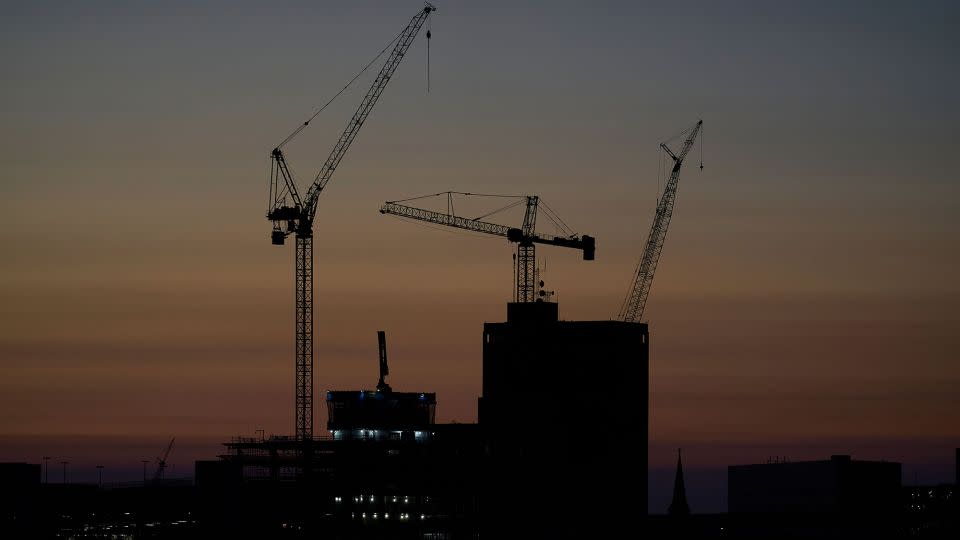
“What you look for are cranes in the skylines, and now you see them everywhere, and it’s a beautiful thing because it’s something positive for the city.” he said. “But, ostensibly, it took for [the bankruptcy] to happen in order to get the investments and get people coming in and seeing the high upsides of the city.”
He added: “But now you see it everywhere, and it’s nowhere more apparent than here at Michigan Central.”
Creating beauty from blight
The resurrection of Michigan Central Station was no small feat.
“It was the most infamous symbol of Detroit’s decline, the international poster child of ‘ruin [photography],’” Dan Austin, Michigan Central’s spokesperson who has long chronicled the city’s architectural history on HistoricDetroit.org.
Fifteen years ago, the station was the bleak and blighted backdrop for rap artist and native son Eminen’s music video for “Beautiful,” a song about his struggles with drug addiction.
The video began with the phrase, “In 1950, Michigan was 1 of 8 states in America that collectively produced 36% of the world’s GNP. Detroit was the greatest manufacturing city in the world.”
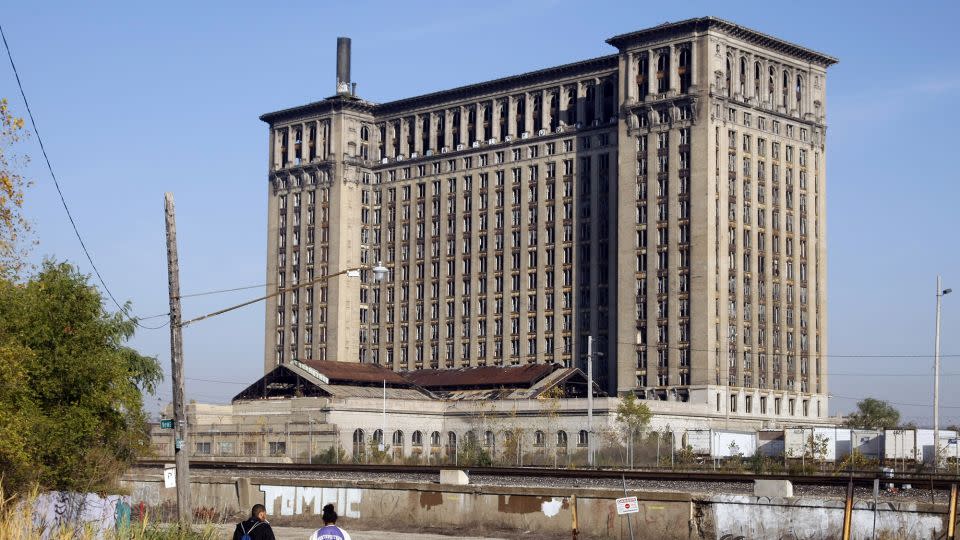
When Ford bought Michigan Central Station in 2018 for $90 million, Chairman Bill Ford told CNN’s Poppy Harlow at the time that the building’s decay was “like a knife through my heart.”
The vision was to restore the building to its prior state of grandeur, outfit the ground floor with restaurants and retail — similar to the refurbishment of Denver’s Union Station — and place offices and a hotel in the stories above.
The neighboring building and surrounding acreage would be complementary to the task of creating a high-tech innovation district hubbed by Ford.
During the past six years, more than 3,000 skilled tradespeople spent a combined 1.7 million hours to meticulously renovate the building. That painstaking work (including 450 hours dedicated to the hand-carving of a Corinthian column framing the main entrance) involved Ford Motor Company reopening an Indiana quarry that served as the source for the original limestone.

“The amount of love poured into this thing, the attention to detail getting it right … I don’t know whether there’s ever been a restoration project of this scale,” Austin said.
When Michigan Central Station officially reopens this Thursday — with a sold-out concert produced by Eminem and boasting a lineup of Detroit performers including Diana Ross and Jack White, according to an announcement Monday — it will serve as the second act of Ford’s billion-dollar innovation district.
Last year, the neighboring Book Depository building was reopened as Newlab at Michigan Central, a tech hub for startups and early stage companies.
Nearly 100 firms operate there today, including many bridging the energy, mobility and manufacturing sectors. The projects under way include developing streets that charge electric vehicles, robots that can handle last-mile deliveries and a “Google Maps for drones.”
“It’s really grown into an extraordinary and thriving ecosystem,” said Josh Sirefman, CEO of Michigan Central Station.
And with Michigan Central Station coming online, that’s only expected to grow.
“That’s the poetry of those catalytic investments by Ford into physical assets that were symbols of both a past time and then of decline,” he said. “And they’re the epicenter of this work that is positioning Detroit once again as a leader.”
For more CNN news and newsletters create an account at CNN.com

 Yahoo Finance
Yahoo Finance 